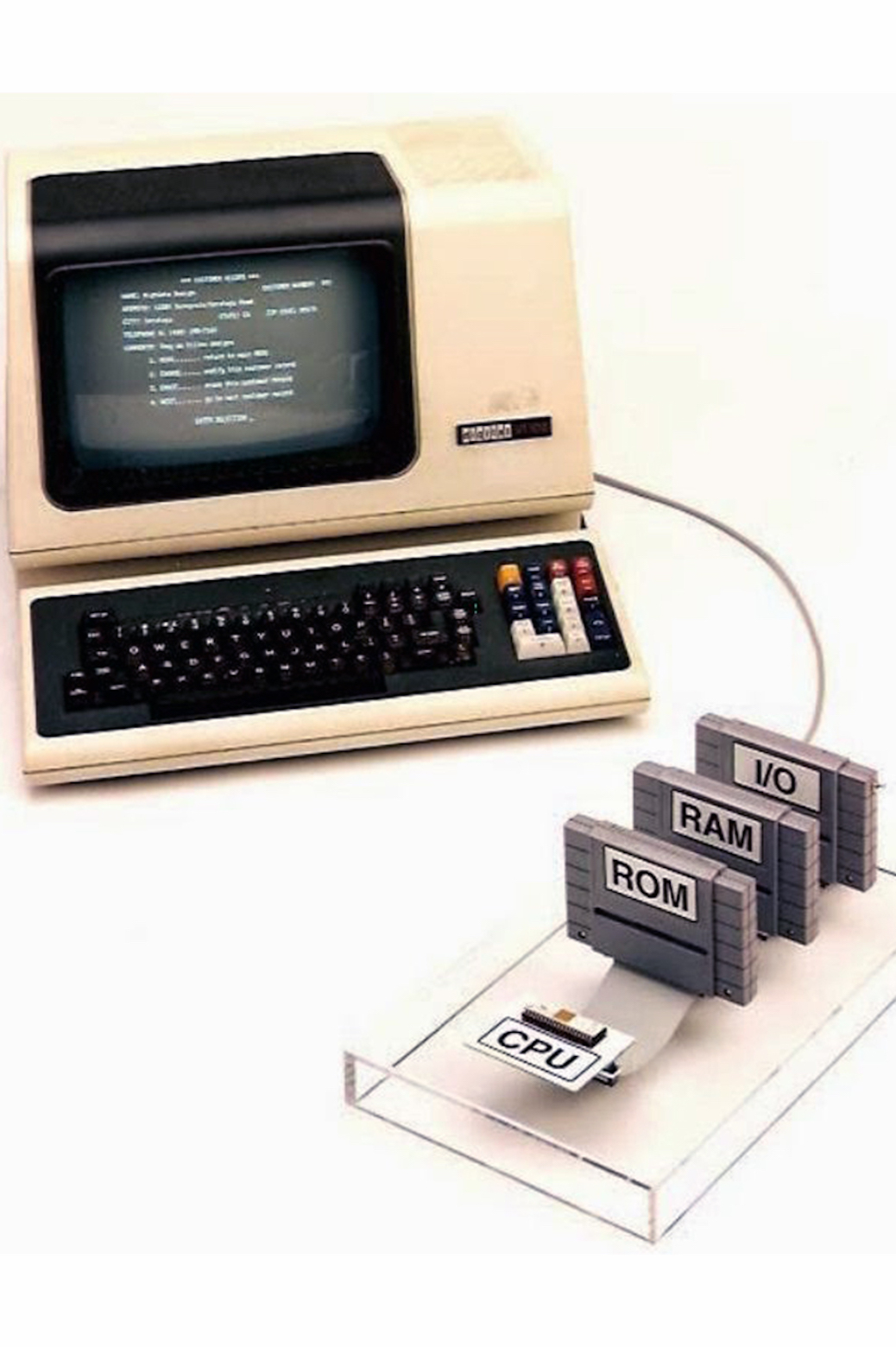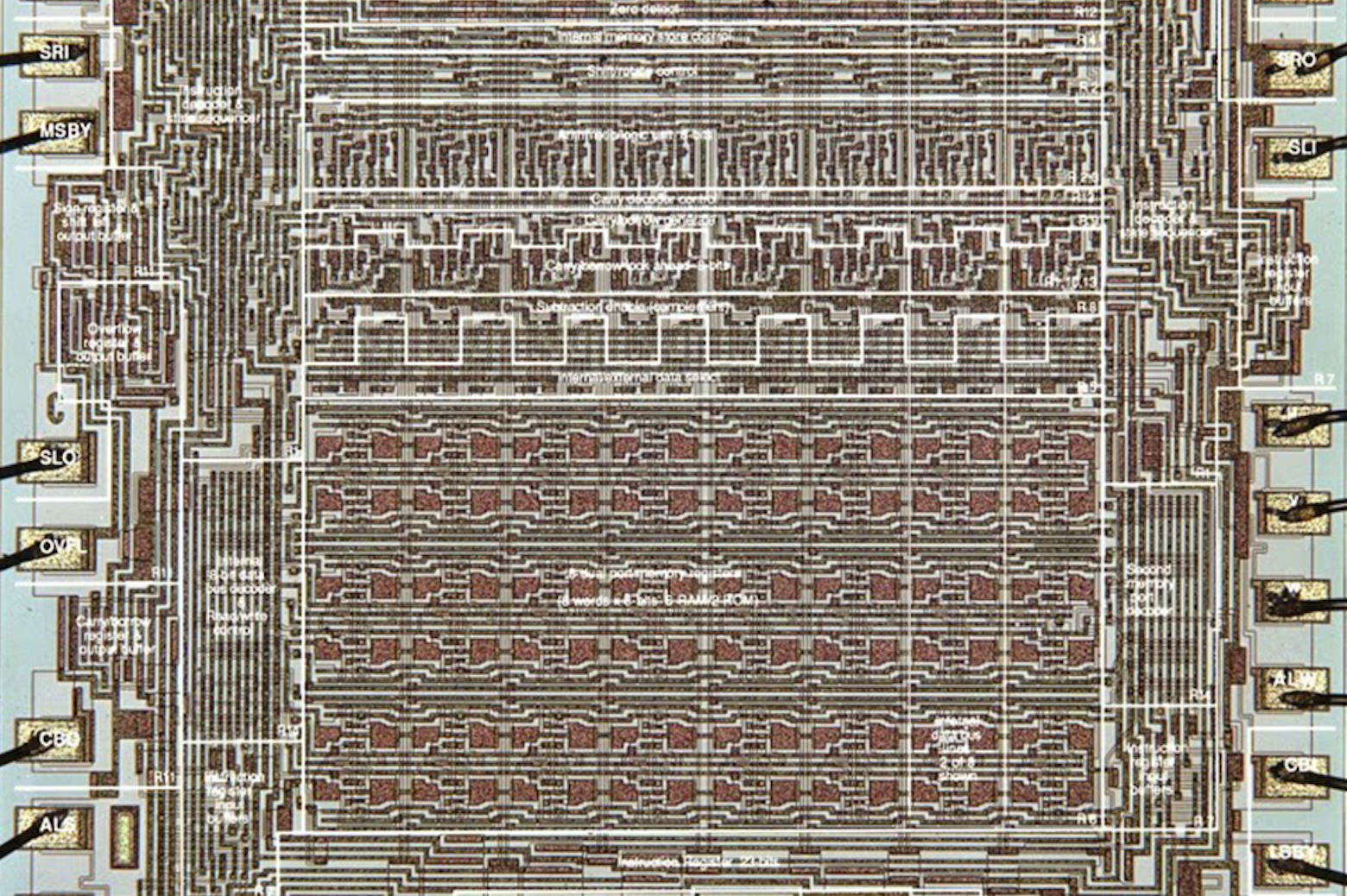Lee Boysel: the early history of microprocessing
Microprocessing changed the computing world, and Michigan alumnus Lee Boysel played a pivotal role.
The transistor – in 1947 – and the integrated circuit – in 1958 – were Nobel Prize-winning breakthroughs in the evolution of modern computing. And by the late 1960s, computer designers were trying to take the next big step: Integrating the central processing unit’s functions onto a single integrated circuit.
This specialized integrated circuit came to be called a microprocessor.
Microprocessing would open the door to personal computing and industrial production on a massive scale. Today, microprocessors put the smarts in smart phones, automobiles, appliances, gaming consoles, fit bits, and all of our many consumer electronic products.

 Enlarge
Enlarge
Some Less Well-Known History
Intel is often credited with developing the first commercial microprocessor with either its 4-bit 4004 microprocessor, released in 1971, or its 8-bit microprocessor released in 1972, which was considered the first practical microprocessor. And Texas Instruments (TI) had built an 8-bit microprocessor, called the TMX1795, around the same time.
But lesser known companies also were developing or already had developed key technology that fed into these early microprocessors. And Michigan Engineer Lee Boysel (BSE MSE EE 1962 1963) was in the midst of it all – working on fundamental microprocessor technology at IBM, McDonnell Aerospace and Fairchild Semiconductor before co-founding his own company, Four Phase Systems, Inc., in 1969.
Boysel developed some of the earliest concepts and published some of the first articles on computer architectures during the 1960s and 1970s, including MOS ROM CPU microcode control, direct video display of RAM information and single bi-directional bus structures – all staples of today’s microprocessor designs. He also worked on the design and fabrication of the semiconductor industry’s first A/D chips, the first static and dynamic MOS ROM, the first parallel ALU, and the first DRAM. Some of this technology was accomplished at Fairchild, and some at Four Phase Systems.

 Enlarge
Enlarge
The Patent Wars
In 1969, Four Phase Systems fabricated a single-chip 8-bit CPU microprocessor, called the AL1. This microprocessor would play a large part in ending years of patent wars between TI and the rest of the semiconductor industry.
It was not typical during these early years of circuit design for companies in Silicon Valley to patent their circuit designs. This was true of Fairchild Semiconductor – even while it aggressively patented other technologies – and it was true of Intel with its 4004.
Four Phase followed this tradition. In fact, instead of filing a patent for the AL1, Boysel described the chip to the entire semiconductor community in a 1970 article published in Computer Design magazine.
TI, on the other hand, was not part of the burgeoning Silicon Valley culture. It had patented its early microprocessor designs, and in the mid-1980s it sued, demanding billions of dollars in usage royalties from the world’s biggest corporations.
And a titanic legal battle ensured.
Boysel the Expert
Boysel had grown Four Phase Systems from its origins in a garage into a major corporation with 5000 employees and annual revenues in excess of $250M. Boysel served as president, CEO and chair until the company was sold to Motorola Inc. in 1982.
So it was only fitting that Boysel would be called as an expert witness in the TI lawsuit – by no fewer than 25 of the various law firms involved.
As a means of refuting TI’s claim, the defendants entered into evidence Boysel’s 1970 article about the AL1. Intel and TI engineers admitted that they were familiar with Boysel’s work, but TI countered that it wasn’t used in a real computer.
His hackles up, Boysel built a computer model and used an authentic, date-stamped 1969 AL1 chip to run it. A week before the first trial in 1995, Boysel was asked the fatal question, and in response he described his demo, which ran the same software as the early Intel and TI chips – only 20 times faster.
“Faces went white; the place turned into chaos,” Boysel said. “They just realized that they’d lost, and it was over…. I’d like to think that that little model saved JQ Public $4 to 5 billion dollars.”
Boysel recounted this story to a rapt audience when he received Michigan Engineering’s 2007 College of Engineering Alumni Merit Award for Electrical and Computer Engineering. He called the talk, “Making Your First Million and Other Tips for Aspiring Entrepreneurs.” [See the slides]
 MENU
MENU 
